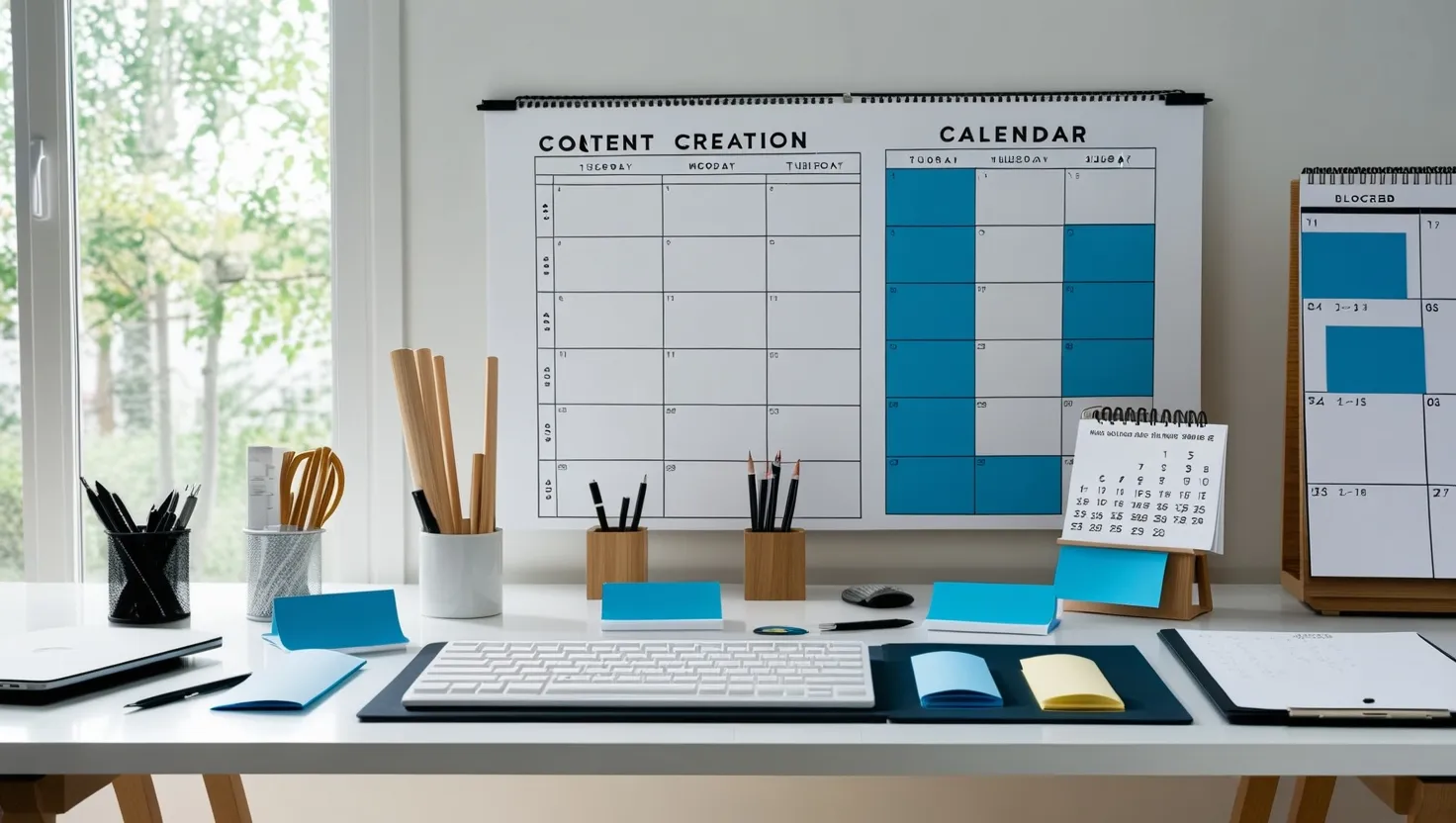Content batching is an essential strategy that transforms the chaotic landscape of content creation into a more streamlined and manageable process. Imagine producing several pieces of content in one focused session instead of scrambling for ideas and materials every day. This method not only enhances productivity but also significantly improves the quality of output. Let’s explore various batching techniques that can help you maintain a consistent flow of content and unlock new levels of creativity.
The first method is the Production Day, where I dedicate an entire day solely to content creation. The premise is simple: clear my calendar of distractions, silence notifications, and immerse myself entirely in the creative process. This deep focus often leads to a higher quality of work than trying to piece together content in short, fragmented sessions. The environment should be prepared to foster creativity, perhaps with background music or a quiet space, allowing for uninterrupted flow. “The mind is everything. What you think you become,” a powerful reminder from Buddha that emphasizes the impact of focused thinking.
Then, there’s Theme-Based Batching, which groups content creation by topics or themes. Sticking to a single knowledge domain helps maintain mental momentum, making the research and ideation phases much smoother. This method reduces the cognitive load often incurred when shifting between disparate subjects. What could happen if you explored a single theme deeply? Would it yield richer insights than a surface-level skim across multiple topics?
Format Clustering is another effective technique. Here, I batch content according to its format rather than its subject matter. For instance, I might dedicate one session to recording all my video content, another to writing articles, and yet another to designing graphics. This maintains a consistent creative mode, minimizing the time wasted on switching gears. Have you ever noticed how creative flow can dwindle when you constantly change focus? By concentrating on one format at a time, the quality and consistency of your work can significantly improve.
Next is the Multi-Purpose Method, which involves creating cornerstone pieces of content that can be repurposed across various formats. For example, recording an extensive video can provide material for shorter clips, articles, and social media snippets. This approach not only maximizes efficiency but also ensures that core messages are reinforced across multiple platforms. Think of it as creating a composite of your ideas, allowing for extensive reach without additional strain on your creative resources.
A practical approach to managing time is Calendar Blocking. This technique means I assign specific time slots for different stages of content creation. On Monday, I might research topics for my blog, while Tuesday is reserved for outlining, Wednesday for writing, and Thursday for editing. By segmenting my tasks, I prevent the inefficiency that often accompanies multitasking. Does this method resonate with you? Can you see how blocking time in this way could lead to more thoughtful creations rather than last-minute scrambles?
The Content Sprint is a more aggressive batching technique, where I allocate 2-3 consecutive days, perhaps quarterly, for intensive content creation. This focused effort can yield a wealth of material suitable for months of content sharing. It’s about setting aside ample time to dive deep into your creative reservoir. What could you achieve in such a concentrated time frame? Would it elevate your overall content strategy?
Lastly, implementing a Batch Processing Workflow can systematize content production. This approach involves creating standardized processes to guide content from conception to publication, ensuring that nothing gets overlooked and that quality remains consistent. Whether it’s a checklist for editing or a timeline for publication, systematizing reduces the stress of last-minute adjustments. How often do you find yourself scrambling to meet deadlines because of an oversight? A structured workflow can dramatically decrease that anxiety.
“Success is where preparation and opportunity meet,” said Bobby Unser. This quote resonates profoundly in the realm of content batching. Each method presents an opportunity to prepare better and achieve consistent outputs while enhancing creativity. But which method might work best for you? Will you take the time to experiment and find the right balance that suits your workflow?
Embracing the multifaceted nature of content batching can transform not only how you create but also how your audience engages with your work. Wouldn’t it be liberating to have a well of content prepped and ready to go? Imagine the relief that comes with knowing you have weeks or even months of material structured and scheduled.
The journey of mastering content batching is akin to crafting a fine wine—it requires time, experimentation, and a willingness to refine your process continually. As you integrate these techniques into your routine, consider which approaches resonate most with your personal workflow. Each method can be tailored to fit your unique style, allowing for adaptability along the way.
In conclusion, content batching is not merely a productivity hack; it’s a strategic framework that liberates creators from the chaotic cycle of last-minute content generation. By leveraging focused sessions, structured workflows, and the powerful insight gained from theme-based and format clustering, you can embark on a path of not only increased efficiency but also enriched creativity. Are you ready to explore how content batching can reshape your content landscape for the better? The possibilities are vast, and the results can be transformative, so step into this new era of content creation with confidence and enthusiasm.






